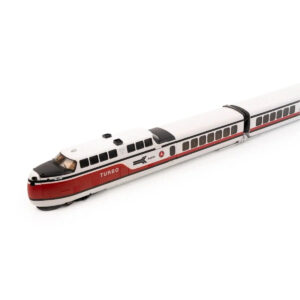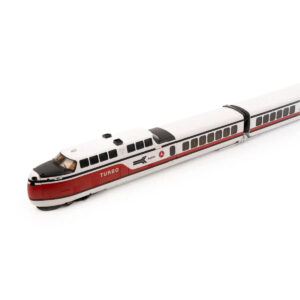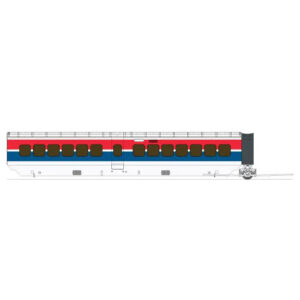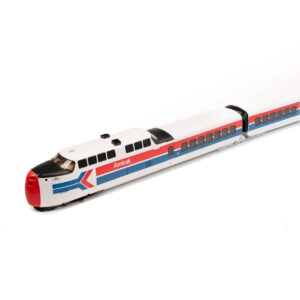UAC Turbo Train
Prototype Information
The United Aircraft TurboTrain was a bold attempt to revolutionize high-speed rail in North America. Developed by United Aircraft Corporation (UAC) in the 1960s, it aimed to bring jet-age technology to the tracks.
In 1966, the U.S. Department of Transportation commissioned UAC to design a high-speed train. The result was the TurboTrain, a sleek, lightweight aluminum train powered by gas-turbine engines—similar to those in jet aircraft. It featured tilting technology, allowing it to take curves faster than conventional trains.
By 1968, the TurboTrain was in service. Penn Central ran it between New York and Boston, where it set a North American speed record of 170 mph (274 km/h) during testing. Meanwhile, Canadian National Railway (CN) introduced the TurboTrain between Toronto and Montreal, where it performed more reliably.
Despite its speed, the TurboTrain struggled with maintenance issues and track limitations. Amtrak retired it in 1976, and CN followed in 1982 as newer, more reliable high-speed rail options emerged.
While short-lived, the TurboTrain proved that high-speed rail could work in North America and paved the way for later projects like the Acela Express.
Showing all 4 results
-

Rapido HO UAC Turbo Train Amtrak “Early” 3 Car Set w/ DCC & Sound
$691.00 Select options This product has multiple variants. The options may be chosen on the product page -

Rapido HO UAC Turbo Train Amtrak “Early” 5 Car Set w/ DCC & Sound
$747.00 Select options This product has multiple variants. The options may be chosen on the product page -

Rapido HO UAC Turbo Train Amtrak “Late” – Additional Coach
$75.00 Select options This product has multiple variants. The options may be chosen on the product page -

Rapido HO UAC Turbo Train Amtrak “Late” 5 Car Set w/ DCC & Sound
$747.00 Select options This product has multiple variants. The options may be chosen on the product page




